fog
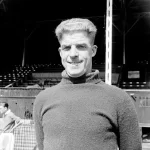 We all know that travel plans can be hampered due to weather conditions, and for drivers, one of the worst weather situations for driving is fog. Of course, weather can affect more than just travel plans. Over the years, we have seen many sporting events called for weather. Everything from snow, to rain, and even fog, although a game called for fog is probably less likely to happen than rain or snow. Still, it isn’t outside the realm of possibilities. It wouldn’t make good sense to try to catch a baseball in the fog. Someone is likely to get hurt. So, games would need to be called for fog, but maybe because a lot of games are played in the afternoon, the fog has had time to burn off.
We all know that travel plans can be hampered due to weather conditions, and for drivers, one of the worst weather situations for driving is fog. Of course, weather can affect more than just travel plans. Over the years, we have seen many sporting events called for weather. Everything from snow, to rain, and even fog, although a game called for fog is probably less likely to happen than rain or snow. Still, it isn’t outside the realm of possibilities. It wouldn’t make good sense to try to catch a baseball in the fog. Someone is likely to get hurt. So, games would need to be called for fog, but maybe because a lot of games are played in the afternoon, the fog has had time to burn off.
In one strange occurrence, during a soccer match between Charlton Athletic and Chelsea in 1937, in the United Kingdom, goalkeeper for the UK’s Charlton Athletic, 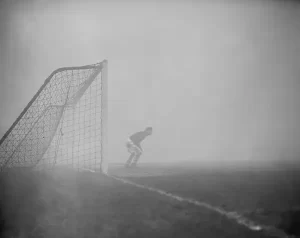 Sam Bartram once stood alone on the field for 15 minutes because he didn’t realize the game had been called off due to heavy fog. Now, if you ask me, that’s ludicrous. Why would he just stand there at the goal for 15 minutes after the game was called!!
Sam Bartram once stood alone on the field for 15 minutes because he didn’t realize the game had been called off due to heavy fog. Now, if you ask me, that’s ludicrous. Why would he just stand there at the goal for 15 minutes after the game was called!!
During the match, a thick fog rolled over the field. It was a very thick fog. The referees decided that this fog was so think that the players were not safe running all over the field, much less dodging a ball too. So, the match was called off, but somehow, Bertram didn’t hear the call, or the whistle or whatever was used to call the game, so he stood there at is post…the goal at the end of the field…alone. Somehow, no one told Bertram that the game had been called, probably because the couldn’t see that he was still out there. So, 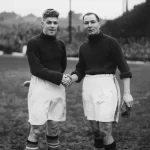 Bertram waited for 15 minutes for the ball to come his way…a full 15 minutes. That’s crazy. How could he have had no idea? Well, somehow Bertram just thought his team was on a “crazy offensive run, pinning down the Chelsea defense, but somehow failing to actually score a goal.” So, there he stood, until finally, a police officer went on the field, and with a look of shock, said something like, “What the heck are you doing? The game’s over, mate.” Well, a rather embarrassed Bartram shuffled off to the locker room, where he was met with unrestrained laughter by his rather rude teammates. They all knew that he was still out there, and no one had made the move to go get him. Well, Bertram got over it, because they were his teammates, and even if it was misguided, it was just a joke after all. I’m sure that after that, he stayed much more alert in the fog that tends to plague the United Kingdom.
Bertram waited for 15 minutes for the ball to come his way…a full 15 minutes. That’s crazy. How could he have had no idea? Well, somehow Bertram just thought his team was on a “crazy offensive run, pinning down the Chelsea defense, but somehow failing to actually score a goal.” So, there he stood, until finally, a police officer went on the field, and with a look of shock, said something like, “What the heck are you doing? The game’s over, mate.” Well, a rather embarrassed Bartram shuffled off to the locker room, where he was met with unrestrained laughter by his rather rude teammates. They all knew that he was still out there, and no one had made the move to go get him. Well, Bertram got over it, because they were his teammates, and even if it was misguided, it was just a joke after all. I’m sure that after that, he stayed much more alert in the fog that tends to plague the United Kingdom.
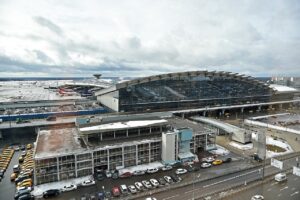 Vnukovo Airport was experiencing heavy fog on November 5, 1946. Due to the resulting low visibility conditions and a high number of aircraft bound for Moscow, including an Aeroflot LI-2 (registration CCCP-L4181) that was being ferried from Voronezh to Moscow. The LI-2, along with a number of other planes, were put in a holding pattern for 75 minutes. These things are a common practice, but maybe not for so long.
Vnukovo Airport was experiencing heavy fog on November 5, 1946. Due to the resulting low visibility conditions and a high number of aircraft bound for Moscow, including an Aeroflot LI-2 (registration CCCP-L4181) that was being ferried from Voronezh to Moscow. The LI-2, along with a number of other planes, were put in a holding pattern for 75 minutes. These things are a common practice, but maybe not for so long.
Finally, at 5:45pm, local time, the crew of the LI-2 was cleared to land and began their approach, still in a thick fog. It was a difficult approach, and the crew decided to go around. In all, five ADF approaches under radar guidance were attempted. Unfortunately, during the fifth approach the plane suffered fuel exhaustion. Immediately, the plane lost altitude and struck light poles and crashed. Fog creates very unique problems, and to complicate matters, that night three Aeroflot aircraft also crashed near Vnukovo Airport, killing a total of 19 occupants.
The first one, Aeroflot LI-2 (registration CCCP-L4181) crashed near Yamshchina, Moskovskaya, Russia. The determined cause was fuel exhaustion after being in a holding pattern for two hours, killing all five crew on board. Then, an Aeroflot C-47 (registration CCCP-L946) crashed in fog at Vnukovo Airport while attempting a go-around after being in a holding pattern for two hours, killing 13 of the 26 on board. Finally, an Aeroflot LI-2 (registration CCCP-L4207) crashed at Vnukovo Airport after repeated landing attempts due to fuel exhaustion after being in a holding pattern for 75 minutes, killing one of 26 on board.
The Vnukovo Airport is Moscow’s oldest operating airport. Originally opened for military operations during the Second World War, it became a civilian facility after the war. The Soviet government approved its construction in 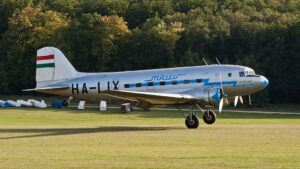 1937, because the older Khodynka Aerodrome, which was located much closer to the city center, was becoming overloaded. That airport closed by the 1980s. Vnukovo was built by several thousand inmates of Likovlag, which was a Gulag concentration camp created specifically for this purpose. Vnukovo opened on July 1, 1941. While the airport was old, it was not the cause of the November 5, 1946 crashes. More likely the pilots and flight controllers, who were preoccupied with the fog, simply forgot to monitor the fuel levels, and missed the fact that they were dangerously low. It is odd, however, that three were missed at the same time, and very sad that 19 people lost their lives because of it.
1937, because the older Khodynka Aerodrome, which was located much closer to the city center, was becoming overloaded. That airport closed by the 1980s. Vnukovo was built by several thousand inmates of Likovlag, which was a Gulag concentration camp created specifically for this purpose. Vnukovo opened on July 1, 1941. While the airport was old, it was not the cause of the November 5, 1946 crashes. More likely the pilots and flight controllers, who were preoccupied with the fog, simply forgot to monitor the fuel levels, and missed the fact that they were dangerously low. It is odd, however, that three were missed at the same time, and very sad that 19 people lost their lives because of it.
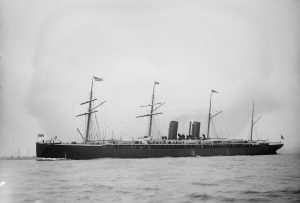 The massive number of ships that sail and have sailed the oceans are mostly safe, but by pure logic, there would also be a number of them for whom safe passage was not to be. For the steamer Alaska, August 8, 1921 would go down in history as the day when her number was up. Shortly after 9:00 pm, the Alaska was sailing south along the California coast, bound for San Francisco, when it hit Blunts Reef…twice. Blunts Reef is located 40 nautical miles south of Eureka, California.
The massive number of ships that sail and have sailed the oceans are mostly safe, but by pure logic, there would also be a number of them for whom safe passage was not to be. For the steamer Alaska, August 8, 1921 would go down in history as the day when her number was up. Shortly after 9:00 pm, the Alaska was sailing south along the California coast, bound for San Francisco, when it hit Blunts Reef…twice. Blunts Reef is located 40 nautical miles south of Eureka, California.
Immediately, the crew knew they were in trouble. Wireless distress signals were flashed. Five miles away the steamer Anyox of Vancouver, British Columbia, Canada picked up the signals…quickly, while disregarding fog and placing themselves in danger of striking the same rocks as the Alaska, put on full speed to the rescue. At 9:30 pm the Anyox received the Alaska‘s final message: “We are sinking by the head.” Before the Anyox could reach the stricken Alaska the ship had sunk, but that was not all that happened to the Alaska.
As the ship sunk, the ship’s boilers exploded…passengers and members of the crew of the steamer Alaska were blown from the decks of the vessel into the ocean. The Anyox, traveling dangerously fast in the foggy night, came upon a lifeboat with survivors from the Alaska. The boat was partially filled with sea water and oily scum. The oil, survivors said, had been thrown over them and into their boat by the explosion of the Alaska‘s boilers, which wrecked the Alaska amidships. The sinking of the Alaska took the lives of 48 of the 214 people on board.
According to the survivors, some of the deaths were caused by the explosion, which threw some passengers and members of the crew into the ocean. Some of those blown into the sea regained the vessel or were saved by clinging to wreckage or finding their way into lifeboats. Others, unfortunately, were either killed or drowned before help came. The Alaska’s sinking came so quickly that all the vessel’s lifeboats could not be deployed. JH Moss and CL Vilin, both of Chicago, said the lifeboat they finally reached had been swept off the decks of the Alaska as the ship settled into the ocean. Other lifeboats, never left their davits and went down with the ship. HS Laughlin of Washington DC, where he worked with the United States Shipping Board, said that a Mr and Mrs Phillips tried for an hour to be taken into a lifeboat after they had been thrown off the Alaska into the water. The survivors all praised the efforts of the officers and crew of the rescue ship Anyox under Captain Snoddy, without whom they would not have been alive.
When the Anyox picked up the first lifeboat and took its passengers aboard Second Officer Andrew Sinclair requested permission from Captain Snoddy to take the Alaska‘s lifeboat and seek survivors in the water who were swimming about and clinging to wreckage. Permission given, three seamen volunteered to accompany 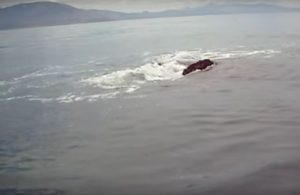 Sinclair. They took the lifeboat and within thirty minutes had rescued thirty persons from the water, rafts, and wreckage, and had put them aboard the Anyox. Captain Harry Hobey of the Alaska, the survivors declared, went down with his ship. Coast Guard vessels Sunday patrolled the waters looking for the wreck. The Coast Guard tugboat, Hanger brought in twelve bodies, all covered with oil. Later fishermen brought five additional bodies to San Francisco. Passengers criticized the Alaska‘s lifeboats. It was said some were not properly manned, had insufficient oars and leaked when put into the water. Nevertheless, those lifeboats had held long enough tp get the complaining passengers to safety. Sometimes, it seems like people forget to be thankful.
Sinclair. They took the lifeboat and within thirty minutes had rescued thirty persons from the water, rafts, and wreckage, and had put them aboard the Anyox. Captain Harry Hobey of the Alaska, the survivors declared, went down with his ship. Coast Guard vessels Sunday patrolled the waters looking for the wreck. The Coast Guard tugboat, Hanger brought in twelve bodies, all covered with oil. Later fishermen brought five additional bodies to San Francisco. Passengers criticized the Alaska‘s lifeboats. It was said some were not properly manned, had insufficient oars and leaked when put into the water. Nevertheless, those lifeboats had held long enough tp get the complaining passengers to safety. Sometimes, it seems like people forget to be thankful.
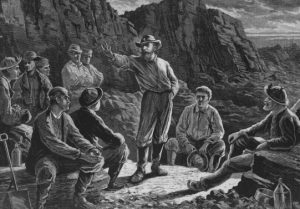 During the Great Potato Famine of September 1845 in Ireland, the leaves on potato plants suddenly turned black and curled, then rotted, seemingly the result of a fog that had rolled across the fields of Ireland. In reality, the cause was an airborne fungus named Phytophthora Infestans. It was originally transported in the holds of ships traveling from North America to England. The resulting loss of the potato crops, put the people of Ireland in dire straits. Many people decided that it was time to immigrate to America. In fact, more than a million people immigrated to America and most settled in the coal regions of Pennsylvania. Many of the Irish Catholics immigrants were routinely met with discrimination based on both their religion and heritage. They often encountered help wanted signs with disclaimers that read, “Irish need not apply.” These days, that practice would have met with harsh retaliation due to anti-discrimination laws.
During the Great Potato Famine of September 1845 in Ireland, the leaves on potato plants suddenly turned black and curled, then rotted, seemingly the result of a fog that had rolled across the fields of Ireland. In reality, the cause was an airborne fungus named Phytophthora Infestans. It was originally transported in the holds of ships traveling from North America to England. The resulting loss of the potato crops, put the people of Ireland in dire straits. Many people decided that it was time to immigrate to America. In fact, more than a million people immigrated to America and most settled in the coal regions of Pennsylvania. Many of the Irish Catholics immigrants were routinely met with discrimination based on both their religion and heritage. They often encountered help wanted signs with disclaimers that read, “Irish need not apply.” These days, that practice would have met with harsh retaliation due to anti-discrimination laws.
I know that a number of my ancestors came from Ireland, and I would not be surprised to find that a number of my ancestors were among those immigrants that came to America to find a better life. The unfortunate thing was that the few people who would hire them, and the few places that would rent to them, were corrupt people. The immigrants finally accepted the most physically demanding and dangerous mining jobs, just to have work. The men and their families were forced to live in overcrowded housing, buy from shops, and visit doctors all “owned” by the company. In many cases, workers wound up owing their employers at the end of 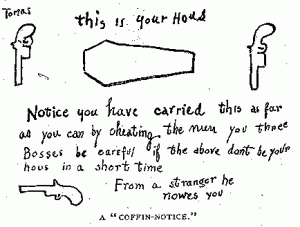 each month. The Irish immigrants were in a very tough situation, but they had been there before, and they were not going to continue to be victimized.
each month. The Irish immigrants were in a very tough situation, but they had been there before, and they were not going to continue to be victimized.
The abuse triggered a period of violence in Schuylkill County, Pennsylvania, between 1861 and 1875. The violence which included assaults, arsons, and murders were blamed on a secret society of Irish immigrants known as the Molly Maguires. The group originally emerged in northern Ireland in the 1840s, as a branch of the long line of rural secret societies including the Whiteboys and Ribbonmen, who responded to miserable working conditions and evictions by tenant landlords with bloody vengeance. When the Civil War broke out, the Irish immigrants were drafted to serve, and they rebelled by sending out “coffin notices” threatening death, because they perceived the war to be a “rich man’s war,” and they wanted no part of it. The notes were alleged to have been written by the Molly Maguires, because they didn’t want to lose their jobs to scabs. Threats were actually carried out 24 times when foremen and supervisors were assassinated.
In 1873, the president of the Reading Railroad, Franklin Gowen hired the Pinkerton Detective Agency to infiltrate and destroy the Molly Maguires, because their union activities were impeding that railroad’s ability to increase profits. The detective, James McParlan, used the alias, James McKenna to infiltrate the group. Oddly, he was an Irishman himself, but I guess money was more important to him. Franklin Gowen served as the chief 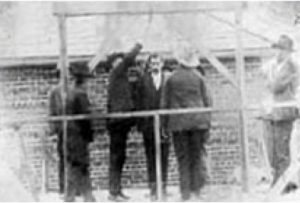 prosecutor, even though his railroad holdings made his participation a conflict of interest. Based almost entirely on McParlan’s testimony, 20 men were sentenced to death—10 of whom were executed on June 21, 1877, also known as Black Thursday. The men declared their innocence right up to the end. Although the existence of the Molly Maguires as an organized band of outlaws in America is under debate to this day, most historians now agree that the trials and executions were an outrageous perversion of the criminal justice system. In 1979, more than 100 years following his hanging, John Kehoe, who was the supposed “king” of the Molly Maguires, was granted a full pardon by the state of Pennsylvania.
prosecutor, even though his railroad holdings made his participation a conflict of interest. Based almost entirely on McParlan’s testimony, 20 men were sentenced to death—10 of whom were executed on June 21, 1877, also known as Black Thursday. The men declared their innocence right up to the end. Although the existence of the Molly Maguires as an organized band of outlaws in America is under debate to this day, most historians now agree that the trials and executions were an outrageous perversion of the criminal justice system. In 1979, more than 100 years following his hanging, John Kehoe, who was the supposed “king” of the Molly Maguires, was granted a full pardon by the state of Pennsylvania.
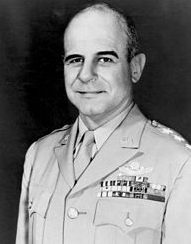 Most of us think very little about piloting a plane. We leave that to the professionals, but how did they get to be professionals? How did they learn all the techniques that they now use every day? Of course, that is a story that is far to long to write here, but suffice it to say that there was a lot of trial and error, a lot of visionaries, and a lot of test pilots who were willing to lay it on the line for progress. Test pilots suffered everything from failure to death in their quest for victory. Eventually they would go on to pave the way for so much innovation, that today, air travel is a commonplace thing, available to almost everyone.
Most of us think very little about piloting a plane. We leave that to the professionals, but how did they get to be professionals? How did they learn all the techniques that they now use every day? Of course, that is a story that is far to long to write here, but suffice it to say that there was a lot of trial and error, a lot of visionaries, and a lot of test pilots who were willing to lay it on the line for progress. Test pilots suffered everything from failure to death in their quest for victory. Eventually they would go on to pave the way for so much innovation, that today, air travel is a commonplace thing, available to almost everyone.
One such innovator, was Jimmy Doolittle. Prior to 1929, planes either had to be rerouted, or not fly in bad weather or limited visibility, but Doolittle was sure that there was a way to fly blind…and land safely. Now he just had to prove it. Until 1929, the only way to fly or land was by sight…known as VFR (Visual Flight Rules). These days pilots know that even if they can’t see, they can still fly safely using the instruments…known as IFR (Instrument Flight Rules).
I’m sure that someone had the idea in their head, that such a thing was possible, with no way to figure it out, but Doolittle was about to make his most important contribution to aeronautical technology…the development of instrument flying. Doolittle realized that true operational freedom in the air could not be achieved unless pilots developed the ability to control and navigate aircraft in flight, from takeoff to landing, regardless of the range of vision from the cockpit. It was an amazing unheard of idea. Doolittle believed that a pilot could be trained to use instruments to fly through fog, clouds, precipitation of all forms, darkness, or any other type of poor visibility. He also believed that the plane could be landed safely even if the pilot’s motion sense was impared. At that time, the ability to control aircraft was partly about getting beyond the motion sense capability of the pilot. You see, sometimes pilots could become seriously disoriented without the visual cues from outside the cockpit. 
On this day, September 25, 1929, Doolittle would prove his theory, that if a pilot would “trust his instruments” and not his senses, he could safely take off, fly, and land, even if he could not see. Flying blind became a reality when Doolittle took off from and returned to Mitchel Field that September day. He had assisted in the development of fog flying equipment, helped develop, and was then the first to test, the now universally used artificial horizon and directional gyroscope. Of course, the flight made big news and Doolittle was given the Harmon Trophy for conducting the experiment.
 When someone has Alzheimer’s Disease, or any form of Dementia for that matter, their family and friends know that there will be moments of clarity, amid many days in the fog. Those are the precious moments. Such was the case a few years ago, when my first cousin once removed, Carol Schumacher Carlson and some of her kids went to visit my Uncle Bill Spencer, who is Carol’s cousin. I’m not sure how long it had been since Uncle Bill had seen Carol, but it was one of those wonderful days. He looked at her and said, “Well, Carol, how have you been?” It was such a sweet moment for both of them. I’m sure that Carol expected that her cousin would have no idea who she was, but he knew her.
When someone has Alzheimer’s Disease, or any form of Dementia for that matter, their family and friends know that there will be moments of clarity, amid many days in the fog. Those are the precious moments. Such was the case a few years ago, when my first cousin once removed, Carol Schumacher Carlson and some of her kids went to visit my Uncle Bill Spencer, who is Carol’s cousin. I’m not sure how long it had been since Uncle Bill had seen Carol, but it was one of those wonderful days. He looked at her and said, “Well, Carol, how have you been?” It was such a sweet moment for both of them. I’m sure that Carol expected that her cousin would have no idea who she was, but he knew her.
 I have had those moments when I have been so pleased that the person I’m talking to, knows me and times when they didn’t. I can tell you that the times they know you are far better…but you don’t get to choose those moments. It’s just not up to you, nor is it up to the Alzheimer’s patient. It just is what it is. You have to treasure the moments of clarity, and deal with the fog, because the patient has no control of it. Believe me, if they could control it, they would. No one wants to lose their memory. Everyone treasures those memories, and when they start to fade, it is sad for them…at least until they just don’t remember them anymore. At some point, it becomes more sad for the visitors than it is for the patient, because they no longer remember that they forgot.
I have had those moments when I have been so pleased that the person I’m talking to, knows me and times when they didn’t. I can tell you that the times they know you are far better…but you don’t get to choose those moments. It’s just not up to you, nor is it up to the Alzheimer’s patient. It just is what it is. You have to treasure the moments of clarity, and deal with the fog, because the patient has no control of it. Believe me, if they could control it, they would. No one wants to lose their memory. Everyone treasures those memories, and when they start to fade, it is sad for them…at least until they just don’t remember them anymore. At some point, it becomes more sad for the visitors than it is for the patient, because they no longer remember that they forgot.
I am so glad that my Uncle Bill and cousin Carol had such a nice visit, and that my Uncle Bill was having a  great moment of clarity, because the visit meant so much to both of them. Carol suffers from Dementia as well, and while neither probably remembers the visit now, the rest of us could tell that it was a very special moment. Sometimes, without even realizing it, kids can do something so special for their parents that, whether the parents remembers it forever or not, makes no difference, because the other people who witness it or see pictures of it, can see just what an amazing moment it really was. This was one of those amazing moments that will live in my memory files forever. I think Carol’s kids are all pretty amazing. They love Carol, and see to her needs in such wonderful ways. I love each and every one of them.
great moment of clarity, because the visit meant so much to both of them. Carol suffers from Dementia as well, and while neither probably remembers the visit now, the rest of us could tell that it was a very special moment. Sometimes, without even realizing it, kids can do something so special for their parents that, whether the parents remembers it forever or not, makes no difference, because the other people who witness it or see pictures of it, can see just what an amazing moment it really was. This was one of those amazing moments that will live in my memory files forever. I think Carol’s kids are all pretty amazing. They love Carol, and see to her needs in such wonderful ways. I love each and every one of them.

